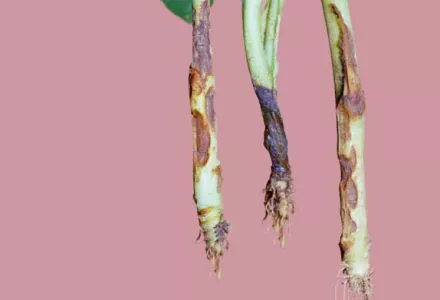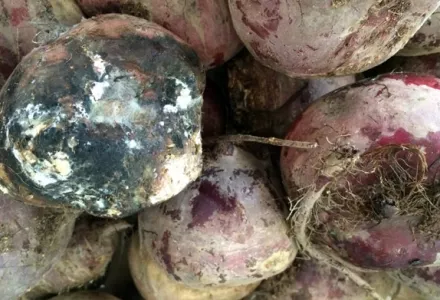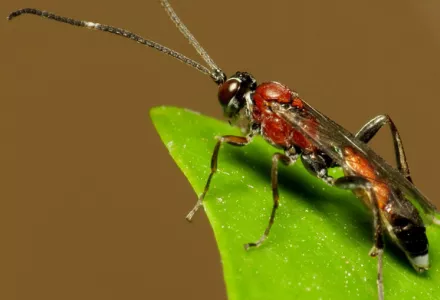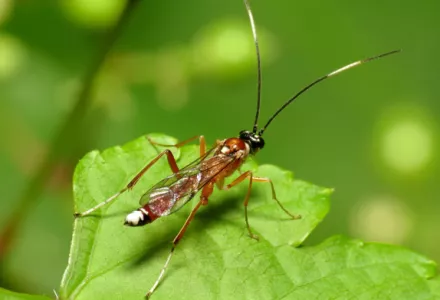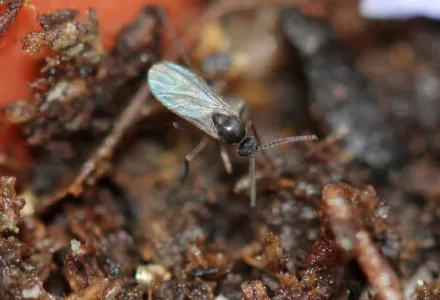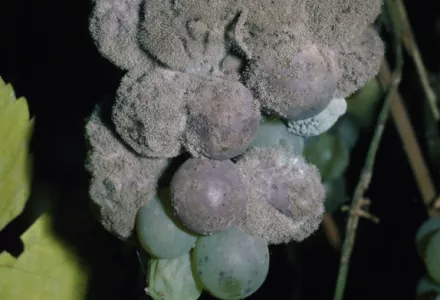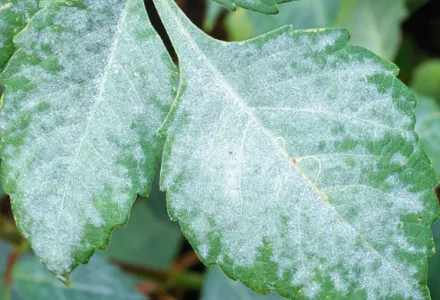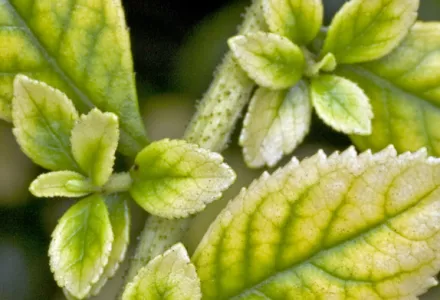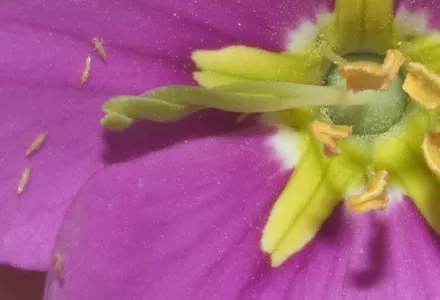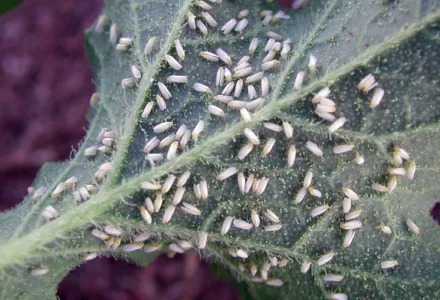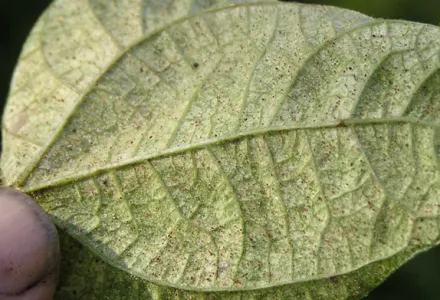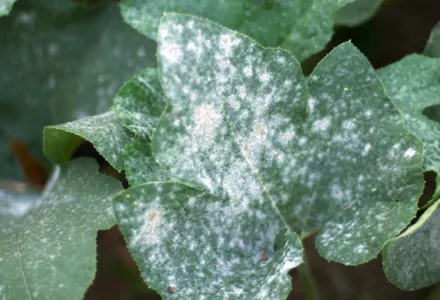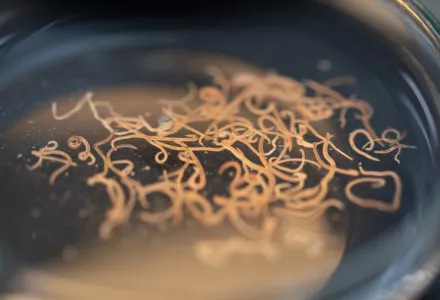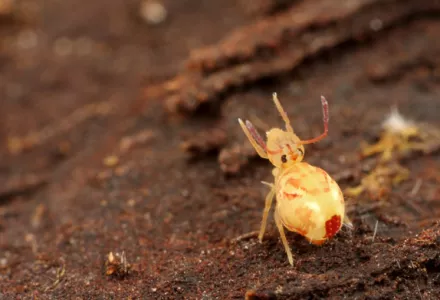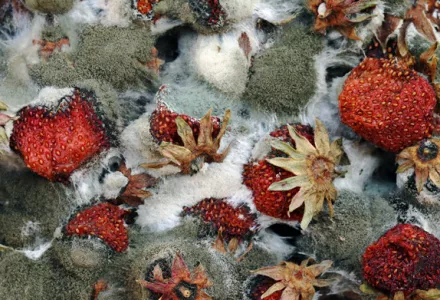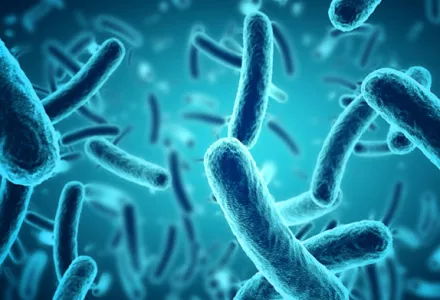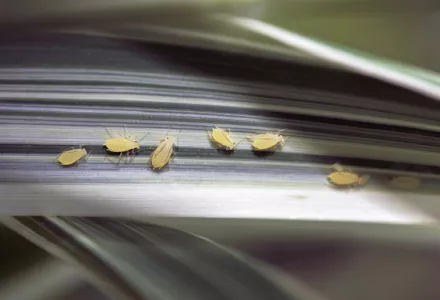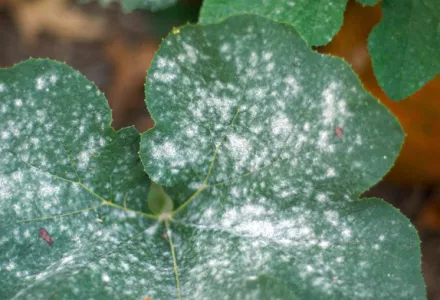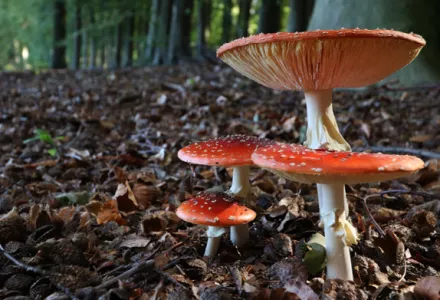The terms oidium and mildew refer to a group of phytopathogenic fungi that cause diseases in plants and have similar symptoms. Oidium is also known as “powdery mildew” and mildew as “downy mildew”.
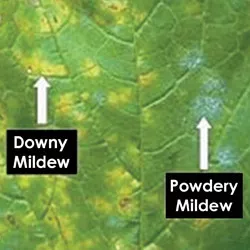
Fungi of this kind appear on the back of the leaves (abaxially). These fungi can usually be recognised because some whitish, grey or pink-hued marks appear on the leaves as if they have had ash sprinkled on them. Initially they look like traces of salt left on the leaves after the water has evaporated or like remains of powder, and they can therefore go unnoticed by the grower. However, as the disease advances, the leaves can end up being completely covered in this white layer and it can even colonize other plant parts, with subsequent losses in crop size and quality.
Recognition and prevention
Although the symptoms of these fungi are apparently quite similar, there are differences between them that will help you to tell which particular fungus is attacking your plants. The best treatment for this type of fungi is prevention; once they set in and develop they are very difficult to eradicate, sometimes even with chemical fungicides. Knowing which fungus you are fighting against will allow you to be certain of picking the best treatment and the one with the fewest side-effects, as well as knowing the best time to apply.
If you want to use biological products to stop the fungus you need to bear in mind that the effect is not very long-lasting; so unless you get the timing right, all you’ll be doing is wasting time and money. Also, a product that is effective against one type of Oidium may not work against another similar-looking mildew fungus
For effective treatment, you need to know what conditions the fungus prefers to develop in and what other factors —such as weather conditions— affect it and in what way. That is why it is so important to determine which specific fungus is attacking your crops, since the optimum conditions for each one are different. For example, some fungi cannot germinate on wet leaves, while others actually need water to spread on the plant.
One of the differences in the symptoms that will help you identify the fungus responsible is the side of the leaf on which the marks appear. Symptoms on the upper side of the leaves are the most common cases. According to McPartland et al., the fungi responsible in tomatoes are:
Sphaerotheca macularis
This is an oidium that attacks a broad range of hosts, so it is very likely to have a reservoir near your grow area. It is a serious problem of strawberry and hop plants.
This fungus spends the winter in the form of asci (an ascus is a kind of bag, fruiting structure, containing a type of spore called ascospores) or mycelium on other wild or cultivated host plants (in parks and gardens, on verandas and terraces, etc.). Infected indoor and greenhouse crops also act as a good reservoir for the disease. This mycelium, which is harboured on other plants, releases conidia (a type of spore). These conidia, mostly carried by the wind, are what end up on the surface of your plant leaves; if the conditions are right, they then germinate and develop, forming new conidia, starting the cycle all over again and causing the fungus to spread to the whole plant.
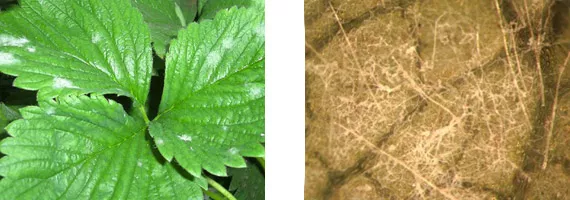
The higher the concentration of conidia in the atmosphere, the greater your plant’s chances of suffering a serious attack by this fungus, and any preventative measures you take should therefore be targeted at creating conditions and applying treatments that prevent the conidia from taking hold on your plants.
This fungus develops on the surface (it does not penetrate deeper layers of the leaf). Another way of identifying it is by rubbing your finger across the leaf: the powder leaves a mark on your finger. That might fool you into thinking that it is easy to eradicate with fungicides. However, if you use biological products with a low systemic effect, the parts you haven’t reached with the fungicide (or where it has not penetrated far enough), will continue to contain small parts of the fungus, which can grow back quickly under favourable conditions. That is why you must keep up the treatment even when you can no longer detect any oidium.
Environmental factors
According to the studies we have consulted, the environmental factors involved in the establishment and development of the fungus on different hosts are as follows:
1. Average daily temperature
Temperatures of over 15°C / 59°F favor the development of the fungus and the spread of the conidia. In general, production of conidia is reduced at temperatures below 15-20°C / 59-68°F or above 26°C / 79°F. According to studies conducted on hops, exposure of around two hours to temperatures over 32°C / 90°F reduces the incidence of the disease.
2. Relative humidity
The optimum range for germination of the conidia is between 75% and 98% humidity. At relatively low humidity rates, the fungus reacts by releasing a greater number of spores. This dispersion is also favoured by sudden fluctuations in humidity. The more the ambient humidity falls and the more abruptly it does so, the greater the number of spores released into the air. Although the environmental humidity is low, due to plant transpiration the leaf surface may be quite damp, facilitating germination of the conidia.
In such cases, a digital temperature and humidity gauge with maximums and minimums is a must, since it will give you a precise idea of when these high-risk conditions arise.
3. Rain
The rain washes away any spores floating in the air and the likelihood of infection on a rainy day is therefore low. A layer of water on the leaves can also prevent the spores from germinating and the conidia from developing and spreading.
The conidia need light to ripen, so the spores are scattered by day, roughly between 1 pm and 3 pm. The most critical time of day tends to come between 5 pm and 9 pm. Studies with hops show that spores that germinate in this time range are more likely to cause greater harm.
Pink rot
This is the fungus Trichothecium roseum. Its symptoms are similar to those described above, but usually occur on the upper side of the leaf. What distinguishes this fungus from S. macularis is that during certain phases of its development it can take on a pink hue. However, in another of its stages, it has the same white or greyish colour as S. macularis, and is therefore easily mistaken for it. According to McPartland et al., another difference with S. macularis is that this fungus is usually limited to the leaves, whereas pink rot can colonise even the stems.
Unlike the previous case this fungus is a saprophyte (it also develops on dead matter) which means that there is always a reservoir of this fungus near- by. As a result, the fungus begins to develop on the plants helped by sticky remains of pests such as white fly, plant lice, wood lice, etc., or on remains of dust or pollen that may have been deposited on the leaves. Once it has developed and built up its strength on these remains it is in a better position to infect the living tissue.
There are practically no references on the damage caused by this fungus or on its biology as a pathogen.
Leveillula taurica
This oidium differs from the others mainly in two aspects: while Sphaerotheca macularis and Trichothecium roseum only penetrate the surface layers of the plants, L. taurica colonizes areas further in. The result is that unlike the other oidia, when you run your finger over the typical “powder”, it doesn’t come off altogether or leaves a mark on the leaf. In addition, whereas the conidiophores (the parts of the mycelium in which the reproductive spores –or conidia– are located) of the fungi S. macularis and T. roseum grow on the surface in the mycelium that is produced, the conidiophores of L. taurica emerge through the stomata of the plant, which are located mainly on the back of the leaves.
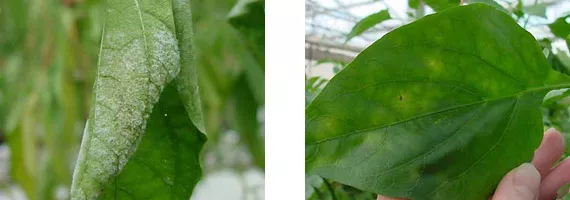
Symptoms vary greatly, depending on the species on which they live. Under the microscope, L. taurica can be distinguished from S. macularis by the morphology of the conidia and conidiophores, and by the emergence of the conidiophores through the stomata. Remember that the stomata are mostly located on the back, so you might notice a whitish felt running round the leaf. There is very little information available on the factors that affect this species in hop plants. Although this phytopathogenic affects around 700 different species, the principal studies carried out have been on hop plants.
These studies have observed that the conidia germinate at temperatures of between 50°F and 95°F (10- 35°C), with the optimal temperature being 68°F (20°C). More extreme conditions (6 hours at 104°F (40°C) significantly reduce the viability of the spores (meaning that in very warm areas there is a smaller chance of infection in summer). It has previously been noted that the fungus needs climatic variations to develop its full cycle and this is also the case here. While the optimal temperature for germination is 68°F (20°C), no new spores form in infected plants at higher temperatures; however the optimum temperature for growth of the mycelium is between 59°F (15 - 25°C).
As for relative humidity levels, the most favourable conditions for germination are a daytime figure of between 85% and 95% and also very humid nights. Although high levels of humidity favour germination, they also hinder development of the mycelium. It is easy to see that the best way of ensuring that plants don’t become infected is by taking preventative treatment when the average temperature is between 50°F and 95°F (10-35°C) and when relative humidity remains high both day and night (e.g. during long periods of rain or constant daytime showers, etc.).
If your indoor plant has already become infected (whether the symptoms are visible or not), you should make sure to keep the temperature and humidity constant without sudden variations. By keeping the temperature as high as possible (without impairing development of the plant) you will help prevent the formation of new spores and hinder growth of the mycelium, thus slowing or stopping the disease from spreading. You should also regularly use natural fungicide treatments. This will prevent the new spores that would spread the disease from forming or make them less viable. At the same time, it will hinder growth of the fungus, thus helping the natural fungicide act more effectively.
Toxicity of the Oidium
Turning to the intrinsic toxicity of the oidium fungi that attack the hop, L. taurica and S. macularis do not produce toxins that might be considered dangerous for human health. However, don’t forget about false powdery mildew or pink Oidium, which even advanced growers find difficult to distinguish from the real thing.
Scientific studies have been carried out to try to establish the differences between the two fungi on hop so they can be safely identified. This pink oidium, Trichothecium roseum, produces a number of micotoxins which are highly toxic in mammals. Studies carried out in 1969 shows that extracts of this fungus at different levels of concentration were capable of killing mice, rabbits and even 19-day-old pigs, as well as causing other injuries.
Given how dangerous this fungus is, you should obviously do everything in your power to prevent the development of Oidium on your plants rather than taking the risk of consuming contaminated plants.

